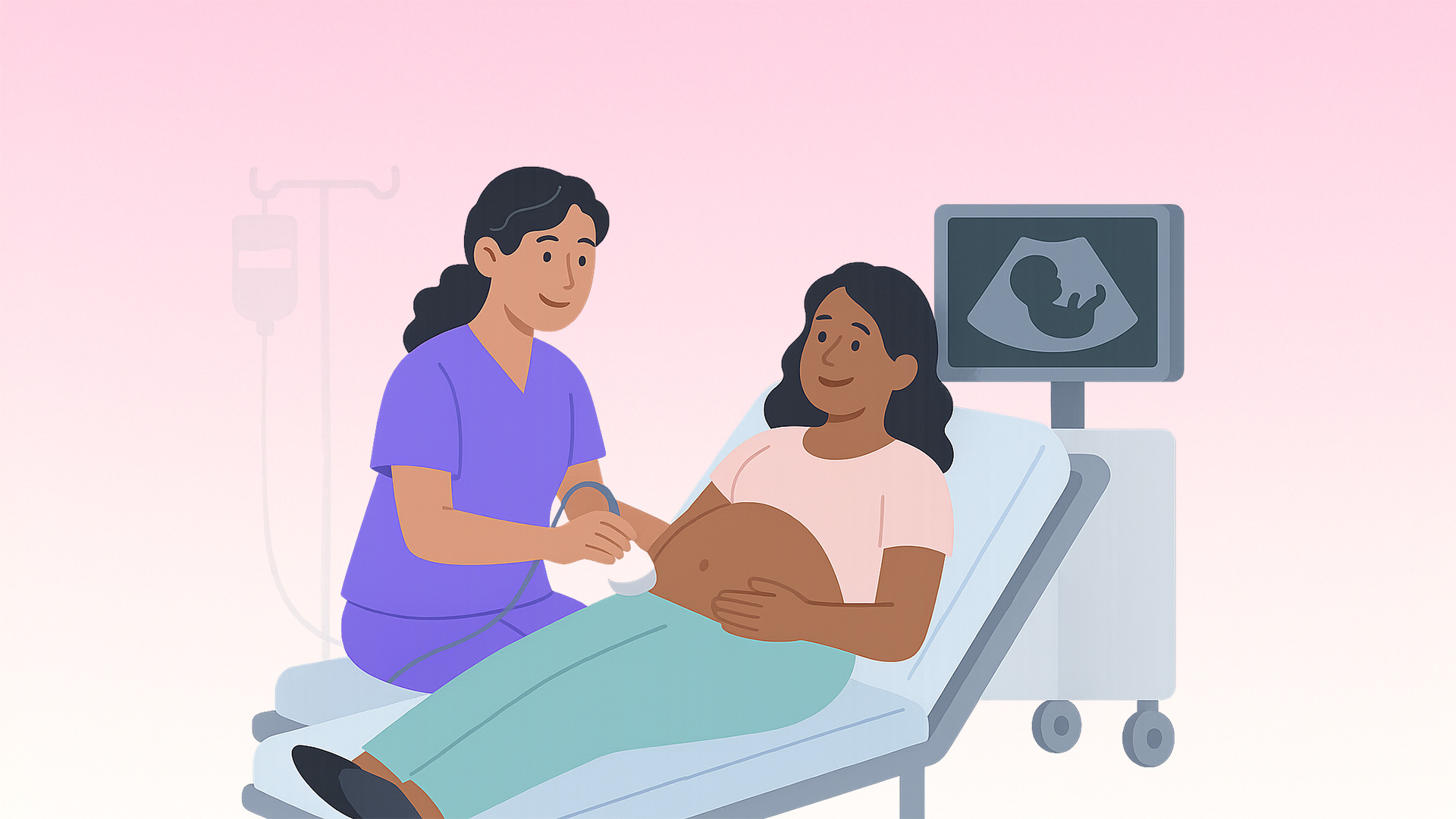The average women’s health nurse practitioner (WHNP) salary in the U.S. in 2025 is +$130,000 per year, with top earners making as much as $180,000 annually. Most WHNP salaries fall between $108,000 and $150,000, depending heavily on factors like location, experience, and credentials. WHNPs are earning more than ever thanks to growing demand, their ability to deliver a wide range of services, and their expanding role in today’s healthcare system.
Why Women's Health Nurse Practitioners Are Earning More in 2025 and What It Means for You?
If you’re a women’s health nurse practitioner or thinking about becoming one, here’s the good news: your paycheck is finally starting to catch up with the value you bring. In 2025, the average women’s health care nurse practitioner salary in the U.S. is sitting at $130,295 with some WHNPs earning well over $180K, depending on where they work and how much experience they have.
And it’s not just the money that’s on the rise. The demand for women’s health NPs is growing fast, especially as more providers lean into preventive care, adolescent health, gynecological health, and prenatal visits. WHNPs are stepping into bigger roles in primary care, health promotion, and even leadership across hospitals, clinics, and private practice settings.
With all this momentum, it’s no wonder WHNP salaries are trending up. But what’s really driving the change? And how can you position yourself to take full advantage of it?
Let’s break it all down: where the jobs are, what affects pay, and the smartest moves to grow your earning power (and your career).
5 Reasons Why WHNP Salaries Are Climbing in 2025
Women’s Health Nurse Practitioners (WHNPs) are stepping into a well-deserved spotlight. The combination of shifting healthcare priorities, expanded roles in preventive care, and increased demand for comprehensive women’s services is changing the landscape really fast.
As conversations around reproductive health, adolescent care, and menopause management grow louder, so does the value placed on WHNPs. But this rise isn’t just about public discourse; it's rooted in real responsibilities, advanced education, and the flexibility to work across diverse settings.
So, what’s actually behind the salary bump? From rising demand in underserved areas to expanded roles in reproductive and primary care, there are a few key reasons WHNPs are getting paid more and getting noticed.
1. The Demand for Women's Health Services Is Growing
The need for comprehensive and preventive care tailored to women is rising sharply. From prenatal visits to after-pregnancy care and menopausal management, WHNPs are key players in ensuring consistent, holistic support for patients throughout every stage of life.
With a strong focus on adolescent health care, fertility evaluation, pregnancy testing, and contraceptive care, women’s health NPs are positioned to handle an expanding list of responsibilities that were traditionally assigned to OB-GYNs and physicians.
This increase in scope means WHNPs are more essential than ever—especially in private practice settings, community clinics, and underserved areas where they provide a full range of services.
2. WHNPs Can Perform Many Physician-Level Tasks
One major salary booster? WHNPs are trained to perform tasks once reserved for doctors. From diagnosing conditions to prescribing medications and managing long-term treatment plans, they bring massive value to healthcare facilities without the overhead costs of hiring a physician.
Their ability to provide well-woman exams, breast cancer screenings, gynecological health services, and more makes them indispensable across clinical settings. Employers know this, and they’re paying accordingly.
3. WHNPs Are In High Demand in Rural and Underserved Regions
Here’s a little-known secret: rural areas may offer some of the best salary opportunities. Why? Because attracting highly specialized providers to less populated or underserved regions is tough so facilities offer financial incentives to bring in WHNP talent.
Whether it's a community health clinic in Wyoming or a nonprofit in Northern California, WHNPs who are open to relocating can earn more and even qualify for student loan forgiveness programs. That’s a win for your bank account and your career.
4. Higher Education and Specialized Certifications Pay Off
WHNPs who go beyond the basics, think DNPs or certifications in reproductive endocrinology or sexual health—see noticeable bumps in their compensation.
While the upfront cost of a DNP program or advanced certification is steep, the return on investment can be huge, especially in academic medical centers or leadership roles.
Whether you’re leading quality improvement initiatives or mentoring future nurses, advanced education can quickly pay off in the form of higher salaries, more leadership opportunities, and greater job security.
5. Career Paths Beyond the Bedside Are Expanding
Not all WHNPs work full time in direct patient care. Many are stepping into roles in administration, policy, research, or education each offering competitive compensation and a break from physically demanding clinical shifts.
Whether you’re interested in teaching within a WHNP program, managing a clinical team, or leading population health initiatives, your background in women’s health makes you a valuable asset in broader healthcare strategy and leadership.
Ways to Increase Your WHNP Pay
If you’re a women’s health nurse practitioner (WHNP) looking to boost your income, you can do it easily, there are options that go beyond “work more hours.” While women’s health care nurse practitioner salaries are steadily rising, you can take a few smart steps to increase your earnings even further and make your WHNP career as financially rewarding as it is fulfilling. Here are four proven strategies to help you maximize your income:
1. Follow the Demand
The more in-demand your services, the more negotiating power you have. Short-staffed clinics, underserved areas, and high-turnover urban centers often offer better compensation to attract WHNPs. You don’t need to move permanently—short-term assignments or contracts in these regions can provide a serious salary boost, especially when housing or travel stipends are included.
2. Level Up with a DNP or Specialized Certs
More education = more leverage. A Doctor of Nursing Practice (DNP) isn’t just about prestige—it opens doors to positions that pay more and give you more influence, especially in large medical systems or academic institutions. Even short-term continuing education or specialty certs in areas like infertility or menopause management can make you more competitive and command a higher rate.
3. Shift Into Leadership or Administrative Roles
If you're ready to pivot from patient care to policy and management, administrative roles can be a lucrative path. Think: leading women’s health departments, running clinical teams, or helping design care protocols that impact entire hospital systems. Many WHNPs find these roles offer higher pay, more predictable schedules, and the chance to shape care delivery on a broader scale.
Does Experience or Education Pay More for WHNPs?
If you’ve ever wondered why some WHNPs seem to command offers at the top of the pay scale without having a doctorate or recent certifications it’s probably because of experience. Time in the field isn’t just about racking up years; it’s about what you learn and how you grow.
Employers value seasoned women's health nurse practitioners because they bring clinical confidence, workflow efficiency, and the kind of “I’ve seen this before” insight that only experience can teach.
With 5–10 years under your belt, you’ve likely managed everything from high-risk pregnancies to complex contraceptive counseling.
That clinical maturity allows you to lead, train others, and step into higher-responsibility roles that come with fatter paychecks. Facilities especially in private practice settings or rural areas often prefer WHNPs who can work independently with minimal supervision—and they’ll pay for it.
Now, education is where you can truly leapfrog into leadership and niche specialties. Earning a Doctor of Nursing Practice (DNP) isn’t just about prestige it’s about positioning.
DNP unlocks pathways to roles in clinical program development, nursing education, quality improvement, and executive-level management. And while the initial investment (time and cost) can be hefty, the return often justifies it especially in university health systems or research hospitals where advanced credentials are a baseline for advancement.
Certifications matter too. Adding subspecialties like lactation counseling, sexual health, fertility evaluation, or menopausal care demonstrates your commitment to providing comprehensive care across a woman’s lifespan.
Employers know you’re not just checking boxes; you’re building a skill set that directly supports better outcomes and that’s something they’re willing to pay for.
Experience + Education = Career Acceleration
So which one’s more valuable? WHNPs with 7–10 years of clinical experience plus a DNP or targeted certification can command some of the highest salaries in the field. This combo signals that you’ve got both the depth of knowledge and the on-the-ground savvy to lead, teach, innovate, and impact patient care on a broader level.
Whether you’re aiming to teach future NPs, direct a women’s health program, or lead health policy initiatives around reproductive care, combining education with experience gives you the credibility and leverage to negotiate higher pay, better hours, and more autonomy.
In short: If you're serious about maximizing your WHNP salary, don’t choose between experience and education. Stack them—and then make your move.
Where Do Women's Health Nurse Practitioners Earn the Most
Given that the average annual salary for a Women’s Health Nurse Practitioner (WHNP) in 2025 is $130,295 most WHNPs fall within a salary range of $108,000 to $150,000, with top earners reaching $180,000 a year. Here’s the percentile breakdown:
- 25th Percentile: $108,000
- 75th Percentile: $150,000
- 90th Percentile: $180,000
Also, WHNPs working in certain cities are seeing annual salaries that beat the national average by thousands, sometimes even tens of thousands of dollars. So if you’re thinking about relocating, or even just choosing where to complete your clinical rotations, geography could be your biggest salary boost these are the top-paying cities for Women’s Health Nurse Practitioners in 2025:
- Green River, WY – $137,272/year
- San Mateo, CA – $132,009/year
- San Francisco, CA – $131,777/year
- Sunnyvale, CA – $130,631/year
- Santa Clara, CA – $130,042/year
- Fremont, CA – $129,658/year
- Daly City, CA – $128,563/year
- Berkeley, CA – $127,933/year
- San Jose, CA – $127,829/year
- Santa Rosa, CA – $127,508/year
Why the difference?
- Cost of living: Cities like San Francisco and San Mateo offer higher salaries to offset housing and daily expenses.
- Demand: Urban and underserved areas often see spikes in reproductive health needs and limited physician availability.
- Retention: Some rural areas boost salaries as incentives to attract WHNPs where providers are scarce.
While WHNPs don’t out-earn nurse anesthetists or midwives, they hold a solid salary advantage over most other healthcare providers, especially considering their ability to specialize, prescribe, and work across diverse settings as shown when compared against other healthcare roles in the U.S.:
- Nurse Anesthetist: $232,540/year
- Nurse Midwife: $159,590/year
- Registered Nurse: $124,000/year
- Physical Therapist: $104,500/year
- Dental Hygienist: $109,970/year
- Licensed Practical Nurse: $65,140/year
- Pharmacy Technician: $49,990/year
Bottom line? Your zip code is just as important as your resume. If you’re open to relocating or traveling temporarily, you can significantly increase your take-home pay or just stretch your salary further by choosing high-pay, low-cost areas.
Your WHNP Salary Isn’t Set in Stone!
Let’s be real: the path to that six-figure WHNP salary isn’t just paved with good intentions and textbook knowledge. It’s built on smart decisions starting with where and how you do your clinicals.
You could be the most passionate, capable NP on the planet, but without the right placements, your earning potential stalls before it starts.
That’s why NPHub doesn’t waste your time with generic matches. We help WHNP students secure clinical rotations that actually move the needle in high-demand areas, with real learning experiences, and with preceptors who want to see you succeed.
Because before you can negotiate that $150K offer or land that job in a top-tier women’s health clinic, you need hours on the clock, experience under your belt, and confidence in your care.
NPHub helps you get there faster, smarter, and without the soul-sucking email spam. We help you graduate on time, reduce stress, and land clinicals that boost your resume with a streamlined process.
Ready to stop spinning your wheels? Book your WHNP rotation now and get one step closer to the career you deserve.
Frequently Asked Questions
1. What is the average women’s health nurse practitioner salary in 2025?
The average WHNP salary in 2025 is $130,295 annually. Most WHNPs earn between $108,000 and $150,000, while top earners in high-demand areas can make up to $180,000.
2. Why are WHNP salaries increasing?
It’s a combo of factors: a shortage of OB-GYNs, growing demand for accessible reproductive care, and more autonomy for NPs in many states. WHNPs are taking on expanded responsibilities and proving their value in primary and specialized women’s health.
3. Where do WHNPs earn the most in the U.S.?
Cities like Green River, WY, and San Mateo, CA lead the pack with average salaries over $130,000. Urban and rural areas with provider shortages often pay more to attract WHNPs.
4. How can I increase my WHNP salary?
Consider becoming a travel WHNP, earning a DNP, stepping into administration, or relocating to a higher-paying region. Salary is influenced by experience, location, and advanced education.
5. Is getting a Doctor of Nursing Practice (DNP) worth it for WHNPs?
Yes, especially if you want to pursue leadership, teach at the university level, or work at academic medical centers. A DNP can open doors and boost your earning potential.
6. Can new WHNP grads land high-paying jobs?
It’s possible—especially if you target underserved areas, pursue additional certifications, or work with a placement service like NPHub to land strategic clinicals early in your training.
7. Do WHNPs earn more in rural or urban areas?
Both can offer high pay. Urban areas often come with a higher cost of living, while rural areas may offer salary incentives and loan forgiveness programs to attract providers.
8. What types of jobs can WHNPs get after graduating?
WHNPs work in OB-GYN offices, university health systems, private practice, and community clinics. Many also specialize in areas like fertility, menopausal care, or adolescent health.
Key Definitions
Women’s Health Nurse Practitioner (WHNP)
A nurse practitioner who specializes in providing comprehensive care to women across the lifespan, including reproductive health, prenatal and postpartum care, menopause management, and preventive screenings.
WHNP Salary
The compensation earned by women’s health nurse practitioners, which varies based on experience, education, geographic location, and practice setting.
Doctor of Nursing Practice (DNP)
A terminal degree in nursing practice that focuses on clinical expertise, leadership, and health system improvement. Often leads to higher pay and advanced career roles.
Travel WHNP
A women’s health NP who takes on short-term assignments in different regions to meet demand. These roles often come with higher pay, housing stipends, and travel benefits.
Nursing Administration
A career track where nurse practitioners move into leadership or management roles within healthcare organizations. These positions often offer higher salaries and less direct patient care.
Underserved Area
A geographic region with limited access to healthcare providers, often qualifying WHNPs working there for loan forgiveness and higher salary incentives.
Preceptor
An experienced nurse practitioner who mentors and supervises NP students during their clinical rotations, ensuring hands-on learning and competency development.
Clinical Rotation
A supervised practice period in a healthcare setting that allows NP students to apply academic knowledge in real-world patient care scenarios—essential for licensure and graduation.
About the author
- NPHub Staff
At NPHub, we live and breathe clinical placements. Our team is made up of nurse practitioners, clinical coordinators, placement advisors, and former students who’ve been through the process themselves. We work directly with NP students across the country to help them secure high-quality preceptorships and graduate on time with confidence. - Last updated
Jun 4, 2025 - Fact-checked by
NPHub Clinical Placement Experts & Student Support Team - Sources and references
Find a preceptor who cares with NPHub
Book a rotation.webp)








.webp)


.webp)



.webp)